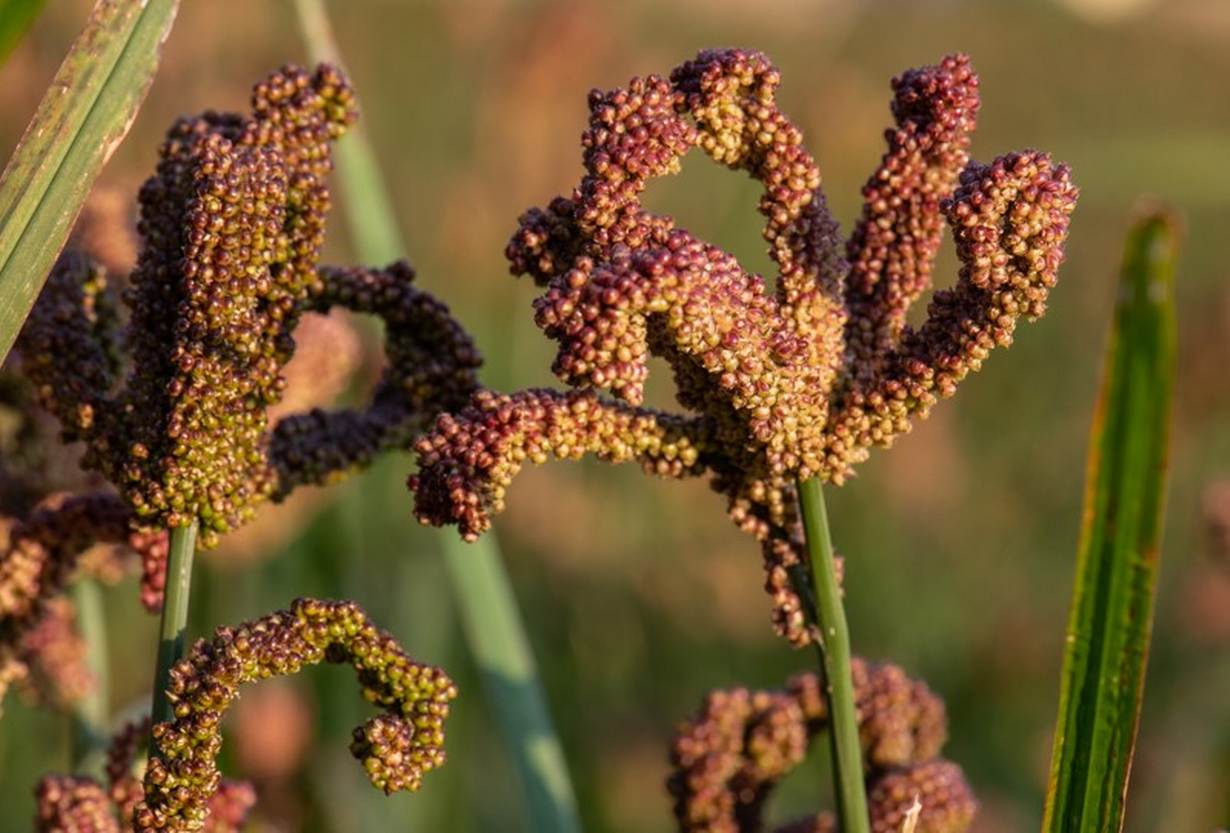Cultivation of Finger Millet (Ragi)
Finger millet (Eleusine coracana), commonly known as Ragi, is a resilient and nutritious cereal crop widely grown in India and Africa. It is a staple food in many regions due to its high calcium content, adaptability to poor soils, and drought resistance.
Scientific Name: Eleusine coracana
Common Names:
- Ragi (India)
- Nachni (India)
- Wimbi (Africa)
- African millet, Koracan millet
Origin and Distribution
Origin and Importance
- Origin: Believed to have originated in Ethiopia, it later spread to India and Africa.
- Importance:
- A staple food in semi-arid regions.
- Highly nutritious, especially rich in calcium, iron, and dietary fiber.
- Gluten-free, suitable for individuals with gluten intolerance.
- Used for making porridge, bread, malt, and other food products.
- Global Cultivation: Predominantly grown in India, Nepal, and parts of Africa.
- India’s Production: Major states include Karnataka, Tamil Nadu, Andhra Pradesh, Odisha, Jharkhand, and Uttarakhand.
Importance
- Nutritional Value:
- Rich in calcium (344 mg/100g), iron, and dietary fiber.
- Low glycemic index: Ideal for diabetics.
- High protein content (7–8%).
- Gluten-free, making it suitable for individuals with gluten intolerance.
- Health Benefits:
- Helps manage diabetes due to its low glycemic index.
- Strengthens bones and teeth due to high calcium content.
- Aids in weight management and digestion.
- Food Products:
- Ragi flour, porridge, malt, bread, biscuits, and baby food.
Characteristics
- Growth Habit:
- Finger millet is an annual cereal crop.
- It forms finger-like seed heads, hence the name “finger millet.”
- Adaptability:
- Grows in arid and semi-arid regions.
- Thrives in poor, degraded soils and is highly drought-tolerant.
Climatic Requirements
- Temperature: 20–30°C is optimal for growth.
- Rainfall: Requires 500–1,000 mm but tolerates low rainfall.
- Altitude: Can grow up to 2,000 meters above sea level.
Soil Requirements
- Soil Type:
- Grows in a wide range of soils, including sandy loam, red loam, and black soils.
- Tolerates acidic to neutral pH (5.0–7.0).
- Soil Fertility:
- Performs well in nutrient-poor soils but benefits from organic manure application.
Land Preparation
- Tillage:Plow the field 2–3 times to ensure a fine tilth. Remove weeds and level the field for uniform sowing.
- Manuring: Apply 10–15 tons of farmyard manure (FYM) during the last plowing.
Varieties
- Other Varieties: VL-149: For hilly regions, short duration. Bhagya (HR 911): High-yielding, for irrigated areas.
- Indaf Series: Indaf-5, Indaf-7, Indaf-9: Suited for dryland and irrigated areas, moderate resistance to blast disease.
- GPU Series: GPU-28, GPU-45, GPU-48: High-yielding, resistant to blast, suitable for various conditions.
- PR Series (Pant Ragi): PR-202, PR-206: Drought-tolerant and resistant to diseases, ideal for Northern India.
- KMR Series (Karnataka Ragi): KMR-204, KMR-340: Adapted to semi-arid areas, resistant to blast.
- RAU-8, Co-13: Suitable for Eastern India and Tamil
Sowing and Propagation
- Season: Rainfed crop: Sown during June–July (kharif). Irrigated crop: Sown during October–December (rabi).
- Seed Rate: Line sowing: 8–10 kg/ha. Broadcasting: 12–15 kg/ha.
- Seed Treatment: Treat seeds with fungicides like carbendazim or bioagents (e.g., Trichoderma) to prevent seed-borne diseases.
- Spacing: Row-to-row: 22.5–30 cm. Plant-to-plant: 8–10 cm.
Crop Duration
- Short-duration Varieties: 90–100 days.
- Long-duration Varieties: 110–120 days.
Nutrient Management
- Fertilizer Requirements:
- Nitrogen (N): 40–60 kg/ha.
- Phosphorus (P2O5): 30–40 kg/ha.
- Potassium (K2O): 20–30 kg/ha.
- Application:
- Apply half the nitrogen and the full dose of phosphorus and potassium at the time of sowing.
- Top-dress the remaining nitrogen 30–35 days after sowing.
Irrigation Management
- Rainfed Crop: Relies on monsoon rains; drought-resistant.
- Irrigated Crop:
- Requires 2–3 irrigations:
- At germination.
- During tillering.
- At grain filling.
- Requires 2–3 irrigations:
Weed Management
- Critical Period: First 20–40 days after sowing.
- Control Methods:
- Hand weeding: Two sessions, first at 20 days and second at 35 days after sowing.
- Pre-emergence herbicides: Use Pendimethalin at 1.0 kg/ha.
Pest and Disease Management
- Major Pests:
- Stem borers: Apply neem-based pesticides or insecticides like carbaryl.
- Aphids: Use systemic insecticides such as Imidacloprid.
- Common Diseases:
- Blast (Pyricularia grisea): Manage with resistant varieties and fungicides like carbendazim.
- Seedling blight: Use treated seeds and maintain proper crop hygiene.
Crop Growth and Harvesting
- Crop Duration:
- Short-duration varieties: 90–100 days.
- Long-duration varieties: 110–120 days.
- Indicators of Maturity:
- Grains turn hard and dark.
- Leaves start drying.
- Harvesting Method:
- Harvest manually using sickles.
- Allow bundles to dry in the field before threshing.
Yield Rainfed Conditions: 1.0–1.5 tons/ha. Irrigated Conditions: 2.5–3.0 tons/ha.
Post-Harvest Management
- Threshing: Thresh the dried bundles using a wooden log or mechanical thresher.
- Drying: Dry grains under sunlight to reduce moisture content to 12–14% for safe storage.
- Storage: Store in airtight containers or grain storage structures to protect from pests and humidity.
Economic Importance
- Value-Added Products: Ragi malt, ragi flour, biscuits, and porridge.
- Livelihood Support: A source of income for farmers in rainfed and tribal areas.
Finger millet, with its low input requirements and high nutritional value, is a sustainable and health-promoting crop, making it an excellent choice for cultivation in resource-limited regions.


